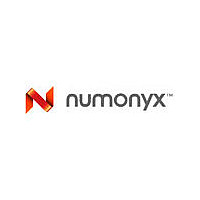JS28F320J3F75A NUMONYX, JS28F320J3F75A Datasheet - Page 58

JS28F320J3F75A
Manufacturer Part Number
JS28F320J3F75A
Description
PARALLEL NOR
Manufacturer
NUMONYX
Datasheet
1.JS28F320J3F75A.pdf
(66 pages)
Available stocks
Company
Part Number
Manufacturer
Quantity
Price
Company:
Part Number:
JS28F320J3F75A
Manufacturer:
MICRON
Quantity:
3 400
Company:
Part Number:
JS28F320J3F75A
Manufacturer:
MICRON35
Quantity:
54
Part Number:
JS28F320J3F75A
Manufacturer:
INTEL
Quantity:
20 000
13.0
13.1
Table 35: Summary of Query Structure Output as a Function of Device and Mode
Datasheet
58
x16 device
x16 mode
x16 device
Device
Type/
Mode
Common Flash Interface
The (CFI) specification outlines device and host system software interrogation
handshake which allows specific vendor-specified software algorithms to be used for
entire families of devices. This allows device independent, JEDEC ID-independent, and
forward- and backward-compatible software support for the specified flash device
families. It allows flash vendors to standardize their existing interfaces for long-term
compatibility.
This section defines the data structure or “database” returned by the (CFI) Query
command. System software should parse this structure to gain critical information such
as block size, density, x8/x16, and electrical specifications. Once this information has
been obtained, the software will know which command sets to use to enable flash
writes, block erases, and otherwise control the flash component. The Query is part of
an overall specification for multiple command set and control interface descriptions
called CFI.
Query Structure Output
The Query “database” allows system software to gain information for controlling the
flash component. This section describes the device’s CFI-compliant interface that allows
the host system to access Query data.
Query data are always presented on the lowest-order data outputs (D[7:0]) only. The
numerical offset value is the address relative to the maximum bus width supported by
the device. On this family of devices, the Query table device starting address is a 10h,
which is a word address for x16 devices.
For a word-wide (x16) device, the first two bytes of the Query structure, “Q” and “R” in
ASCII, appear on the low byte at word addresses 10h and 11h. This CFI-compliant
device outputs 00h data on upper bytes. Thus, the device outputs ASCII “Q” in the low
byte (D[7:0]) and 00h in the high byte (D[15:8]).
At Query addresses containing two or more bytes of information, the least significant
data byte is presented at the lower address, and the most significant data byte is
presented at the higher address.
In all of the following tables, addresses and data are represented in hexadecimal
notation, so the “h” suffix has been dropped. In addition, since the upper byte of word-
wide devices is always “00h,” the leading “00” has been dropped from the table
notation and only the lower byte value is shown. Any x16 device outputs can be
assumed to have 00h on the upper byte in this mode.
Query start location in
maximum device bus
width addresses
10h
Numonyx
Query data with maximum device
Offset
Hex
10:
11:
12:
bus width addressing
®
Embedded Flash Memory (J3 65 nm) Single Bit per Cell (SBC)
Hex Code
0052
0059
0051
ASCII
Value
“Q”
“R”
“Y”
Query data with byte addressing
Offset
Hex
20:
21:
22:
20:
Hex Code
51
00
52
51
March 2010
208032-02
ASCII
Value
“Null”
“Q”
“Q”
“R”












